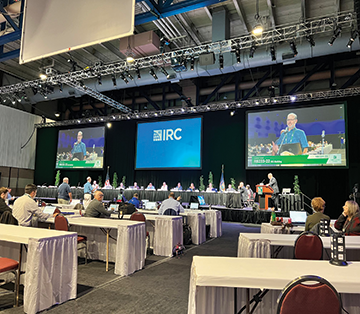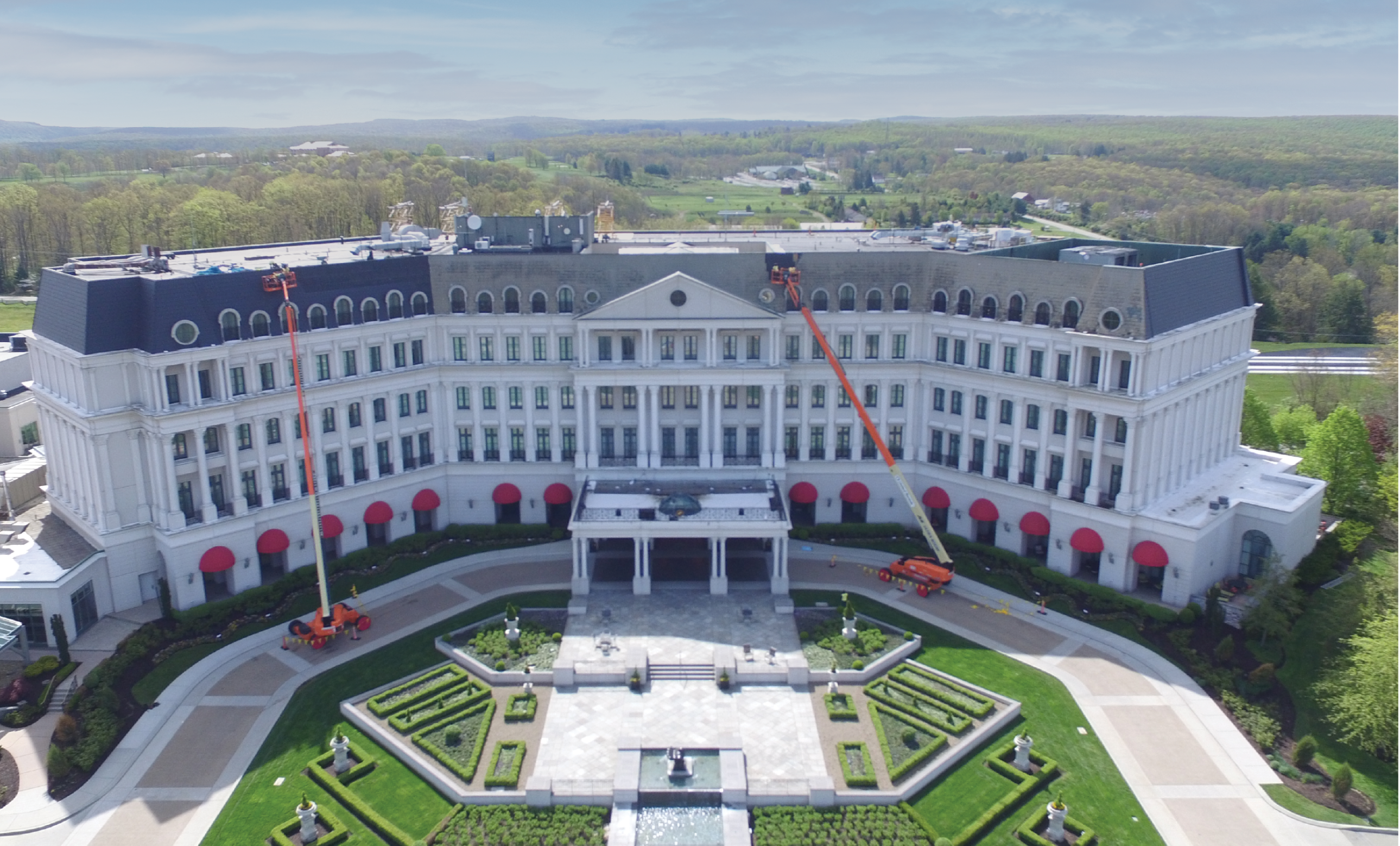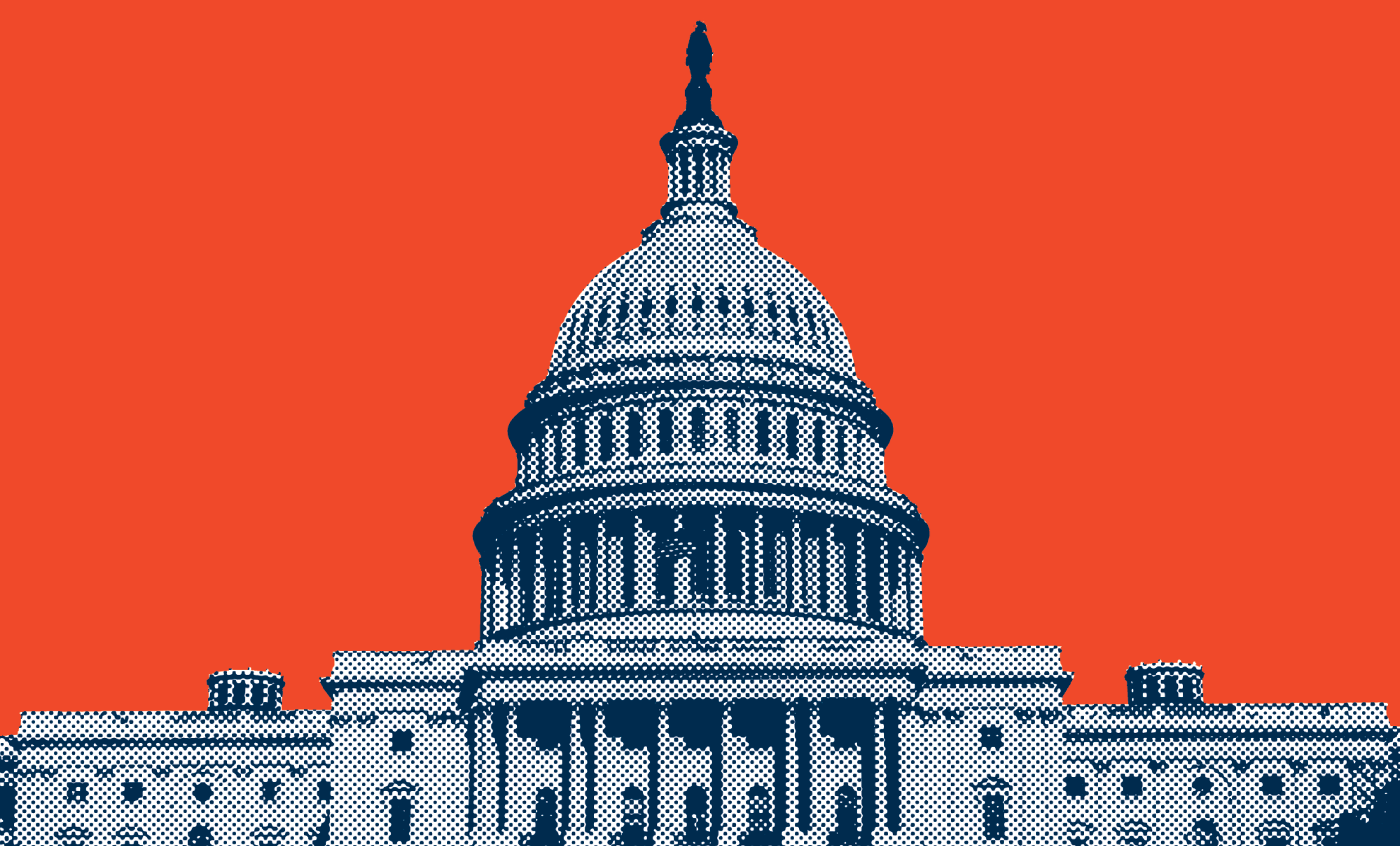
From March 27 to April 6, NRCA’s technical services staff participated in the International Code Council®’s Group B committee action hearings for development of the 2024 I-Codes. More than 750 code change proposals were considered during 104 hours of in-person committee hearings. Following are some highlights of the roofing-related proposals and the next steps in ICC’s code development process.
Code development process
ICC split its development cycle for the 2024 I-Codes into two groups with Group A occurring in 2021 and Group B occurring this year. In Group A, ICC’s general, fire safety and plumbing committees heard several roofing-related code change proposals.
In Group B, revisions to the I-Codes Chapter 1-Administrative provisions and additional roofing-related code change proposals were considered. Most of International Building Code®’s Chapter 15-Roof Assemblies and Rooftop Structures and International Residential Code®’s Chapter 9-Roof Assemblies sections fall under the jurisdiction of ICC’s structural committee and residential committee, respectively.
NRCA proposed 28 code changes, and 116 other proposals were on NRCA’s watch list as having some effect on roof system design and installation. Fifteen of NRCA’s code change proposals were approved.
IRC
Code Change S22, Part II, adds the new ASTM International standard for synthetic underlayment, ASTM D8257, “Standard Specification for Mechanically Attached Polymeric Roof Underlayment Used in Steep Slope Roofing,” to IRC’s Table R905.1.1(1)-Underlayment Types.
In addition, Code Change RB260 correlates IRC’s Table R905.1.1(1) to the code’s text and adds clarifying statements indicating underlayment is not required for wood shake roof systems over spaced sheathing and structural metal panel roof systems over open frame structures.
Code Change RB268 adds ASTM D3161, "Standard Test Method for Wind Resistance of Steep Slope Roofing Products (Fan-Induced Method),” testing and classifications as an acceptable method for determining wind resistances of slate roof systems.
Code Change RB274 combines IRC’s Section R907.12-Thermoset Single-ply Roofing and Section R907.13-Thermoplastic Single-ply Roofing into a new section, Section R907.12-Single-ply Roofing. A new table, Table R905.12-Single-ply Roofing Material Standards, lists the required ASTM International product standards applicable to single-ply membrane roof systems. This code change proposal correlates with a similar code change appearing in IBC 2021.
Code Change RB280 adds a new section, Section R908-Roof Coatings. A new table, Table R908.2-Roof Coating Material Standards, lists the required ASTM International product standards applicable to roof coatings. This code change proposal correlates with a similar code change appearing in IBC 2021.
IBC
Code Changes S5 and S6 clarify the code requirements for attic ventilation and wind resistance, respectively.
Code Change S7 adds wind resistance testing and classifications for slate roof systems as in Code Change RB268 for IRC.
Code Change S11 removes IBC’s outdated and unenforceable accelerated weathering test requirement for roofing products. More stringent, product-specific accelerated weathering already is provided by the applicable materials standard required in IBC’s Section 1507-Requirements for Roof Coverings.
Code Changes S22, Part I, and S23 add ASTM D8257 to IBC’s Table 1507.1.1(1)-Underlayment Types and correlate the table to the code’s text. These code changes correlate to IRC’s Code Change S22, Part II, and RB260.
Code Change S28 combines Table 1507.4.3(1)-Metal Roof Coverings and Table 1507.4.3(2)-Minimum Corrosion Resistance into a single table providing material standard and corrosion-resistance requirements for metal roof coverings.
Code Change S36 adds a requirement for flashings for building-integrated photovoltaic systems to be installed according to the roof covering manufacturer’s instructions.
What’s next
ICC will accept public comments on Group B committee action until June 20. Public comments received and the agenda for ICC’s public comment hearing will be posted on ICC’s website, iccsafe.org, by Aug. 4.
ICC’s public comment hearing will be held Sept. 14-21 in Louisville, Ky. NRCA technical services staff will take part in this public comment hearing.
ICC’s online governmental consensus vote starts about two weeks after the public comment hearing and is open for two weeks.
Code change proposals approved during ICC’s public comment hearing and by ICC’s online governmental consensus vote, along with code changes approved during ICC’s Group A code development hearings, will be published as the 2024 I-Codes, likely in late 2023.
MARK S. GRAHAM is NRCA’s vice president of technical services.
To read about ICC's Group A hearings, see "The first step," June 2021 issue.
This column is part of Research + Tech. Click here to read additional stories from this section.



